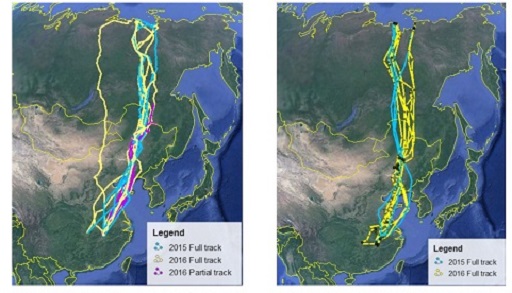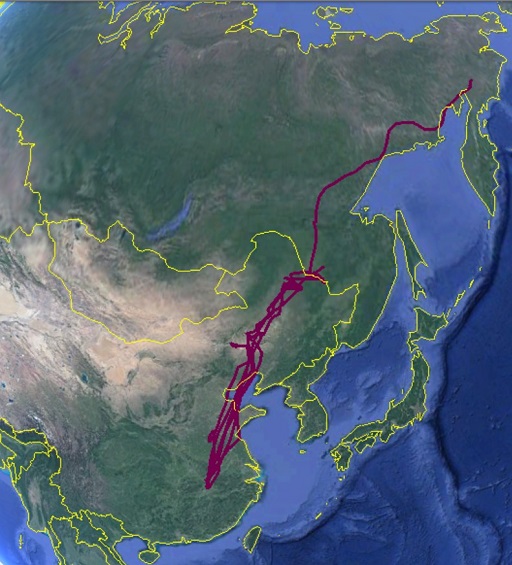During 2014 and 2015 wintering seasons, researchers from the Department for Earth System Science (DESS), Tsinghua University captured and released 41 geese (including 24 greater white-fronted geese, 13 bean geese, 3 lesser white-fronted geese, and 1 swan geese) equipped with GPS-GSM satellite transmitters in Poyang Lake, Jiangxi Province. The project aims to gain a better understanding of the movement patterns and migration strategies of East Asian waterfowl in response to the environment change.
So far, the research group has received data for 14 greater-white fronted geese, 7 bean geese and 1 swan goose. Eight greater white-fronted geese managed to complete at least one full spring and autumn migration and returned to Poyang (Fig.1). Another six individuals only completed part of their 2016 spring migration and were lost contact in northeast China located 2800 km away from Poyang (Fig.1).

Fig. 1 Spring (left) and autumn (right) migration routes of greater white-fronted geese wintering in Yangtze River Basin, China in 2015 and 2016.
Additionally, seven bean geese completed partial spring migration trip in 2016 (Fig. 2). These individuals were out of contact in Qingdao, Northeast China Plain, and Severo-Evenskiy, Russia. The migration distance to Severo-Evenskiy is over 5700 km.

Fig. 2 The partial t spring migration routes of seven bean geese wintering in Yangtze River Basin, China in 2016
The tracked swan goose departed from Poyang on March 11 2016, stopover in North Korea and Inner Mongolia, and no data has been sent back since then (Fig. 3)

Fig.5 Spring migration route of the tracked swan goose in 2016